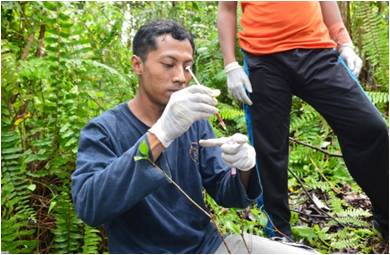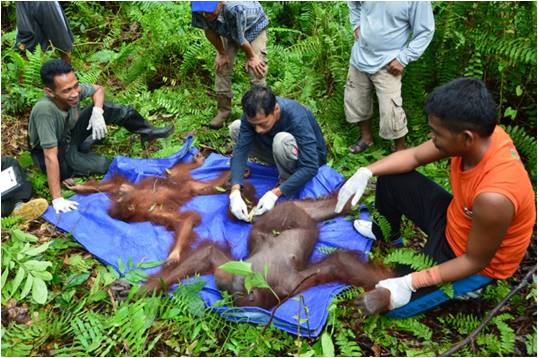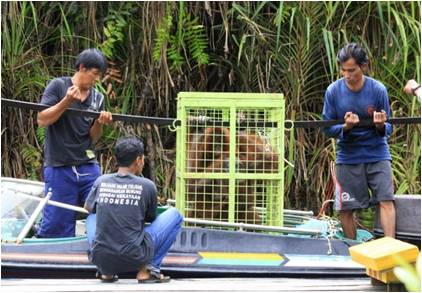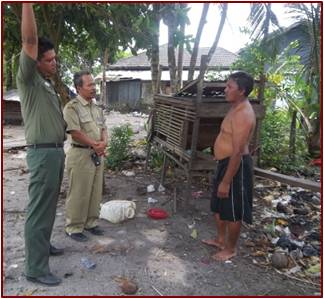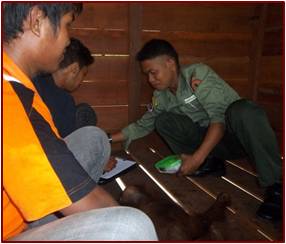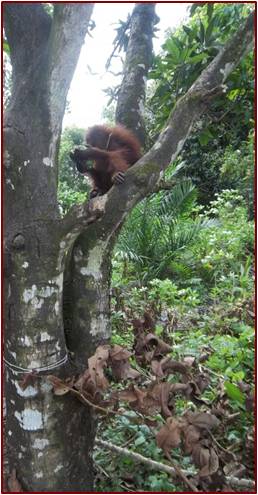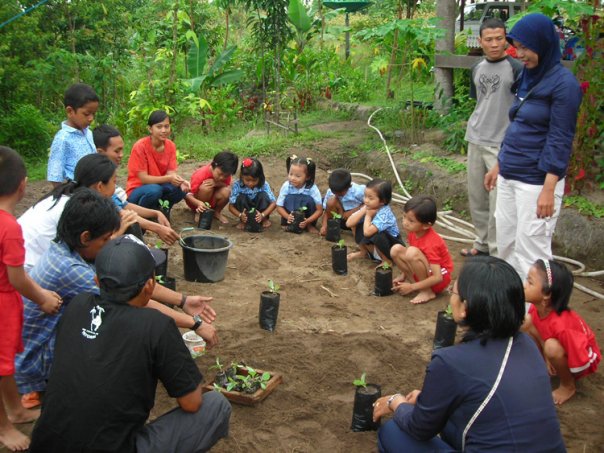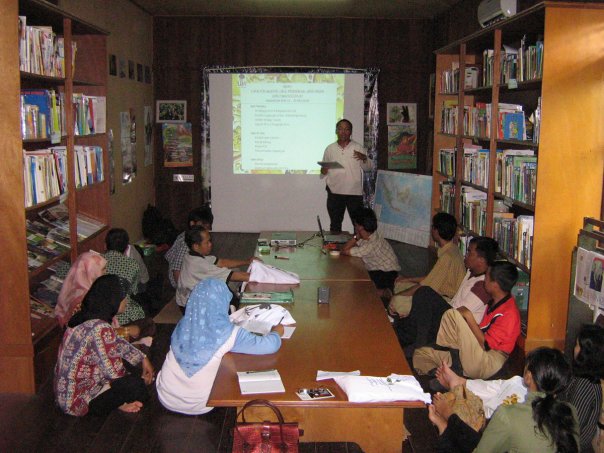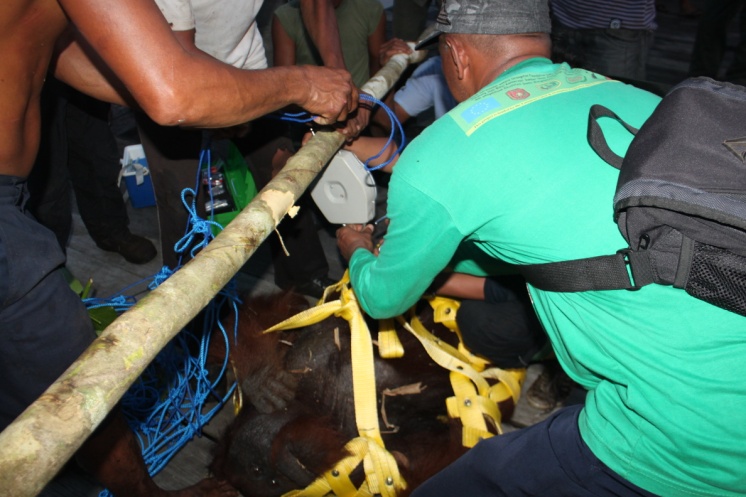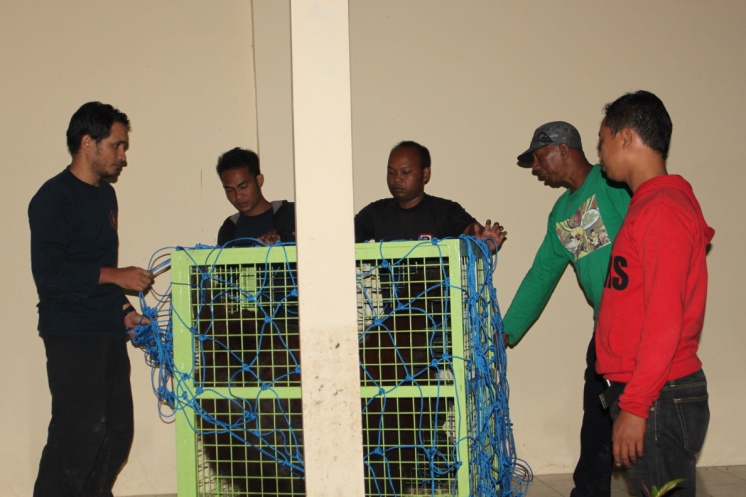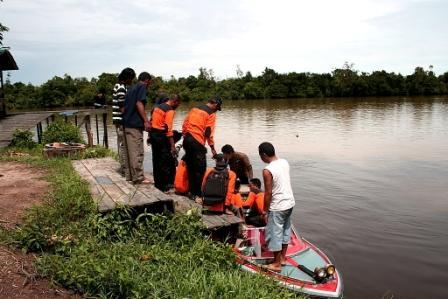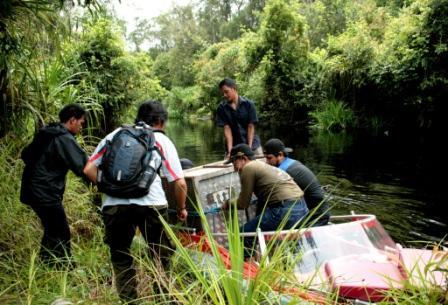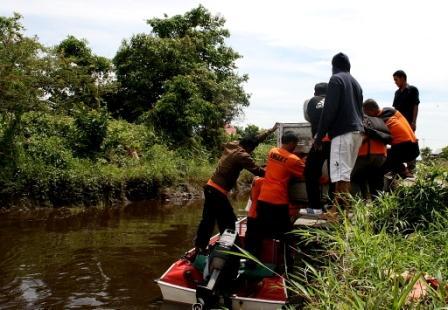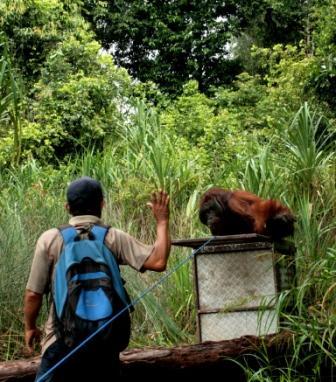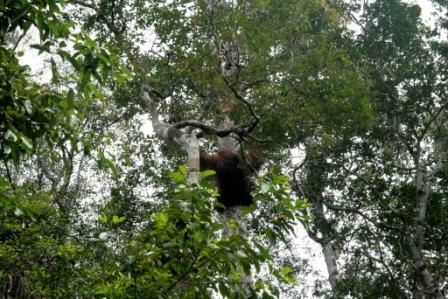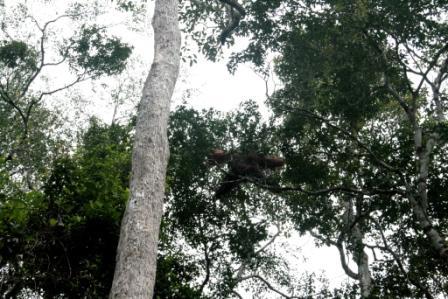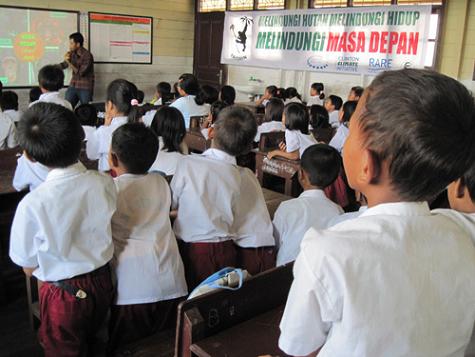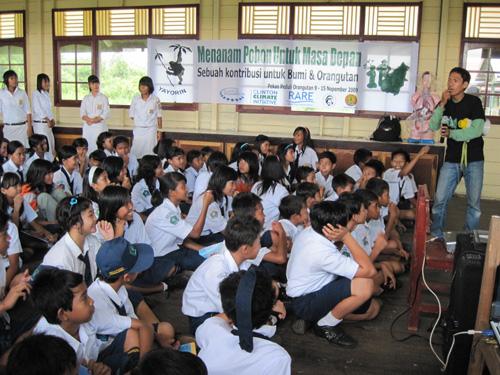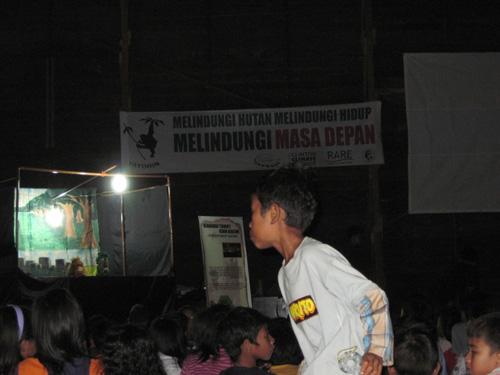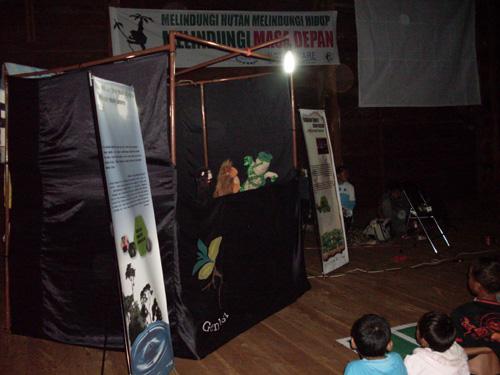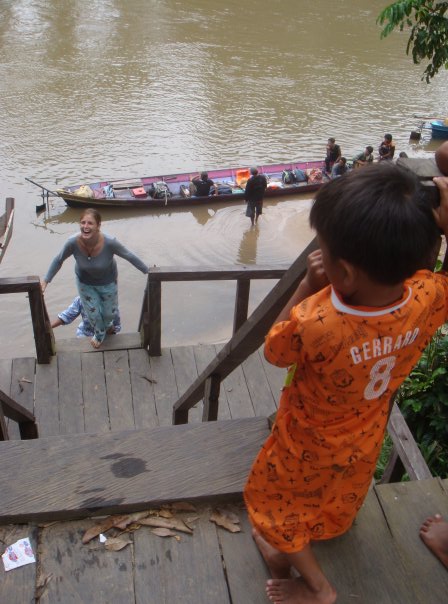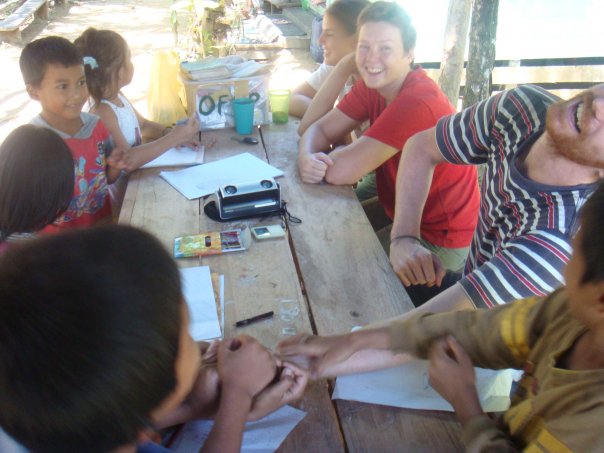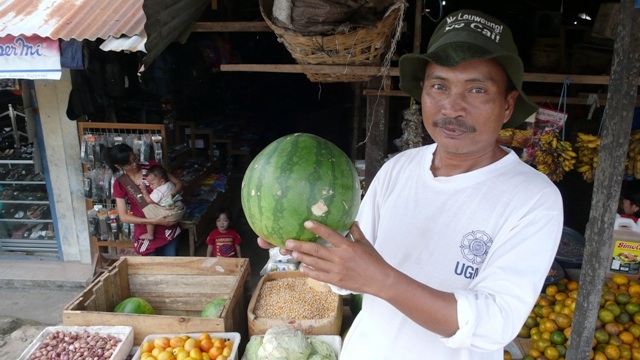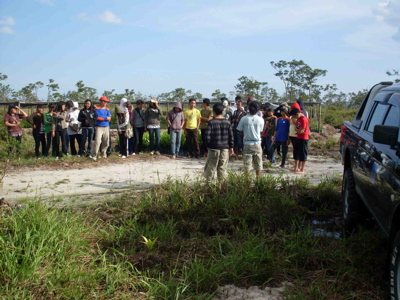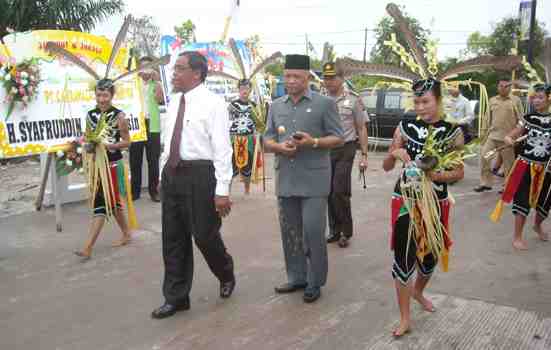Our vet, Dr Wawan, has written this post about the rescue of a female Bornean orangutan, who had been seen in a village rubber plantation and a nearby oil palm plantation.
"We had received information from Bapak Haji Arun and villagers that orangutans have often being seen in Arun’s rubber plantation, eating rubber seeds and bark and also in forest near PT GAP oil plam plantation area.
Our rescue team comprised; PT GAP Oil Palm Plantation (Darman, Erik etc); BKSDA SKW II Kalteng (Muda, As Blek) - Agency for Conservation of Natural Resources; and Orangutan Foundation (Wawan, Tigor, Sariamat, Uduk, Udin).
We arrived on location at 27 june 4.30pm. Based on Pak Erik (PT GAP) information, this place was often passed by orangutans. Sometimes they in rubber plantation at left side of road or sometimes in the forest on the right side. Pak Erik did monitoring for almost two months and he said at least five orangutans often seen there, he also took pictures.
Our team then went to the rubber plantation where we found some nests but no orangutans. We took some photos of the orangutan nests and then as dusk fell, at 6pm, we go to PT. GAP mess to rest.
The next day we arrived on location at 6am, three people had already seen an orangutan in the high branch of tree at the forest area right side of road.
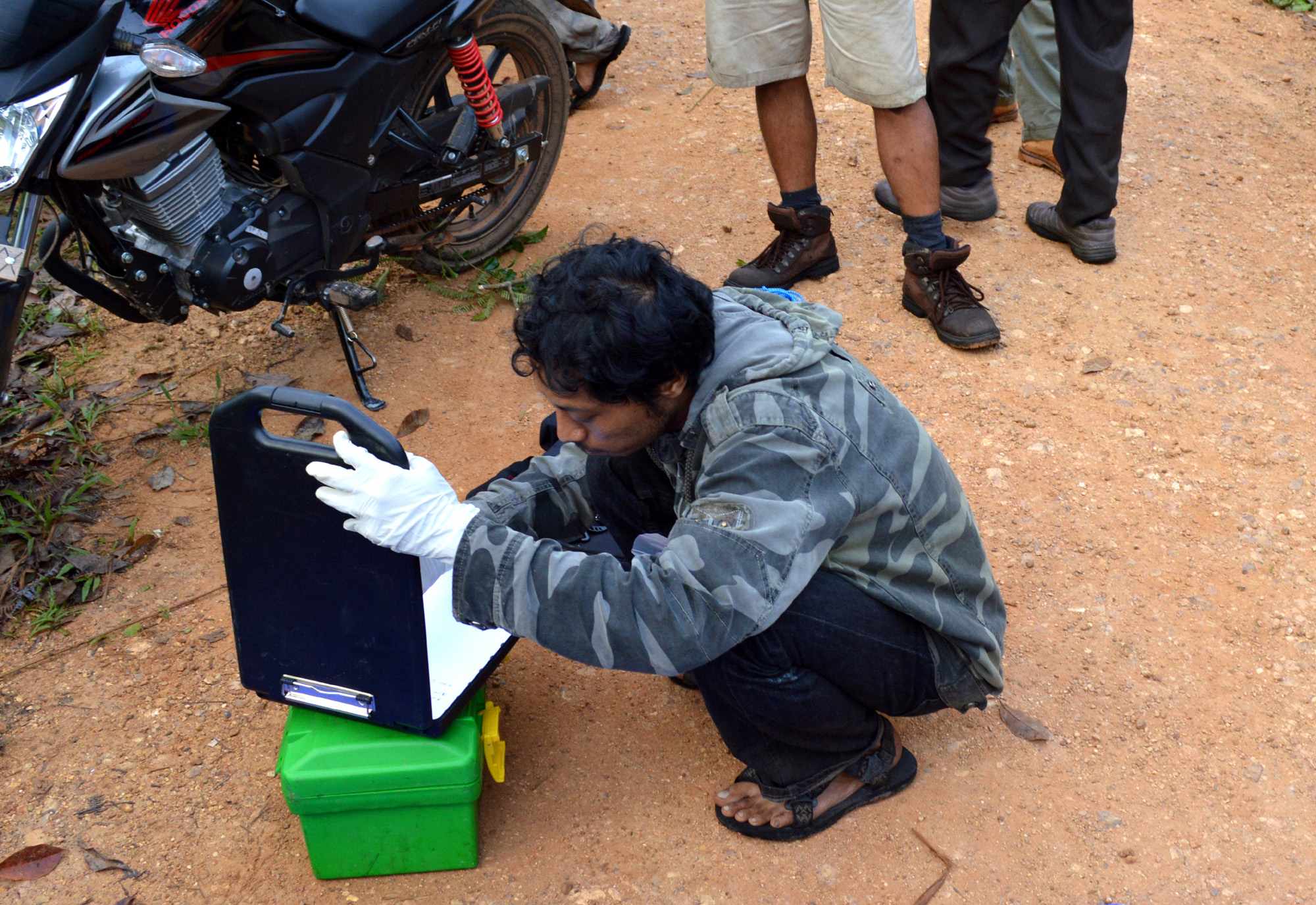
After seeing the orangutan I prepare some darts with anesthetic ‘ketamine hcl’ for estimated 30 Kg body weight.

The deep trench between the road and forest blocked our path. Pak Sariamat, Uduk and I tried to find way around to penetrate the thick bush of forest in order that we could approach the orangutan from behind.

As Blek (from BKSDA) and Tigor stayed on the road to keep watching the orangutan. After a while we came up close to the female orangutan but she see us as well. She begins to intimidate us with her voice and by throwing branches at us.
As Blek and Uduk blew the pipe for several times but all missed because she keep moving all the time, sometime sit on very high tree branches so its impossible for syringe dart reach it, we all think it would be easier with a dart gun. We keep following her for many hours but in the end we feel so tired and give up. After take a rest for a while, we decided to go out from the forest and walk to the main road road. Udin, Orangutan Foundation staff, suddenly saw the orangutan in a tree beside the road. We were surprised and tried to capture her again but even this time we got same result, the orangutan disappeared.
We then decided to check the rubber plantation area. After a short time we found another female orangutan in a rubber tree. We spread our team to surround the target, but it is not that easy, again the orangutan is very active, keep moving. Uduk blew the pipe several times but kept missing. Then we decide to keep follow this orangutan until dusk when she also tired and making a nest for a rest. At 6pm orangutan make a nest and sleeping. We make a sign on that tree and plan to come there tommorow before sun rise.
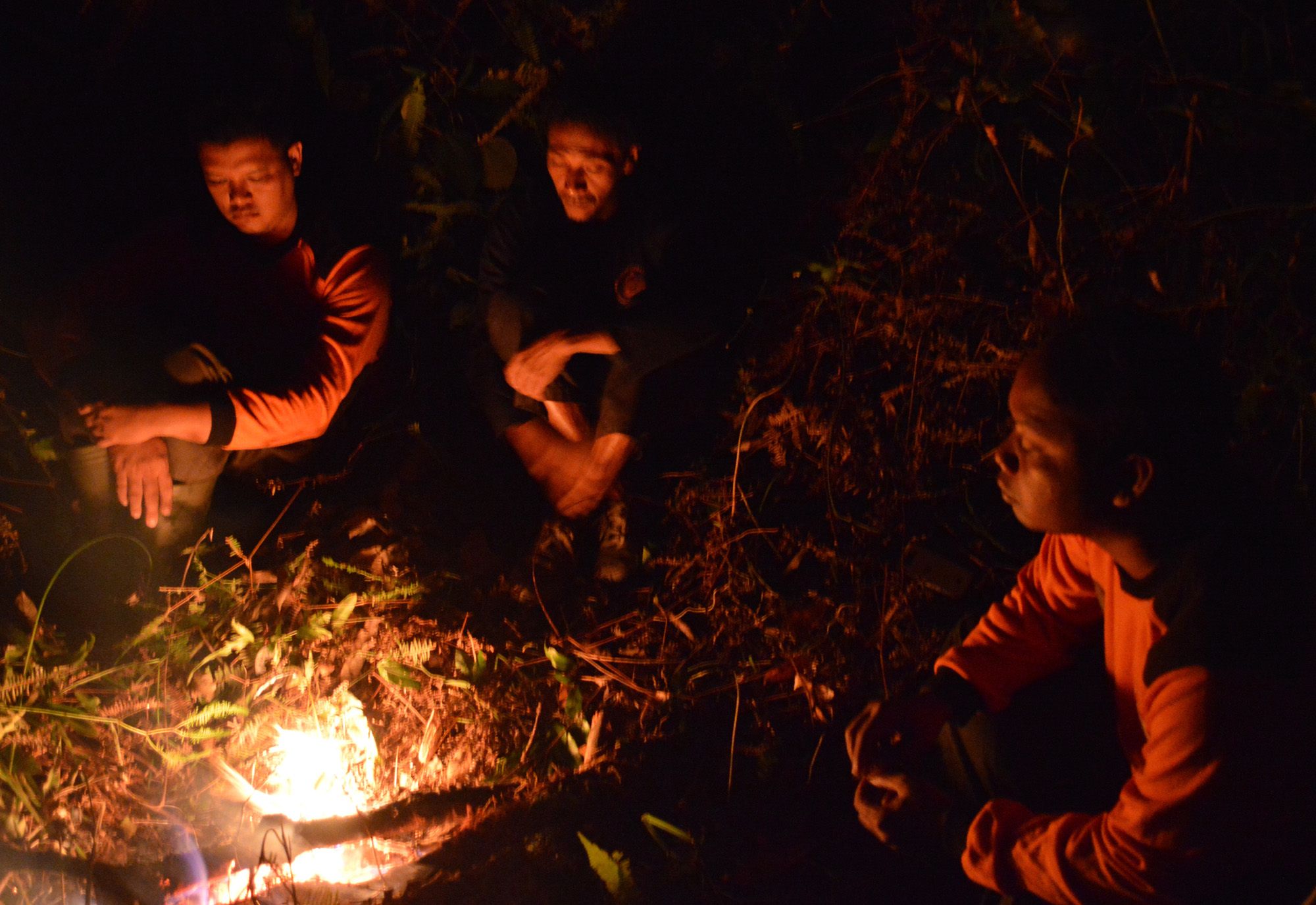
At 4am the next day we started off to go to the location, day still dark and we use a small flashlight in order to approach to the nest tree. Once there Pak Uduk make a small fire to avoid mosquitos and keep us warm.The orangutan still sleeping in the nest and at 6am as the day brightened she woke and started to move through the rubber trees.
Once she hang on short branch, Uduk blew the pipe and finally the dart needle penetrated her right foot. She still moving and still strong after around 5 minutes. As Blek tried a second dart needle which successfully penetrated on her left thigh. Two minutes later, the orangutan fell.

I give her an examination and she seems healthy. Based from the pattern of teeth she is about 12-15 years age and her body weight was 27.4 Kg.
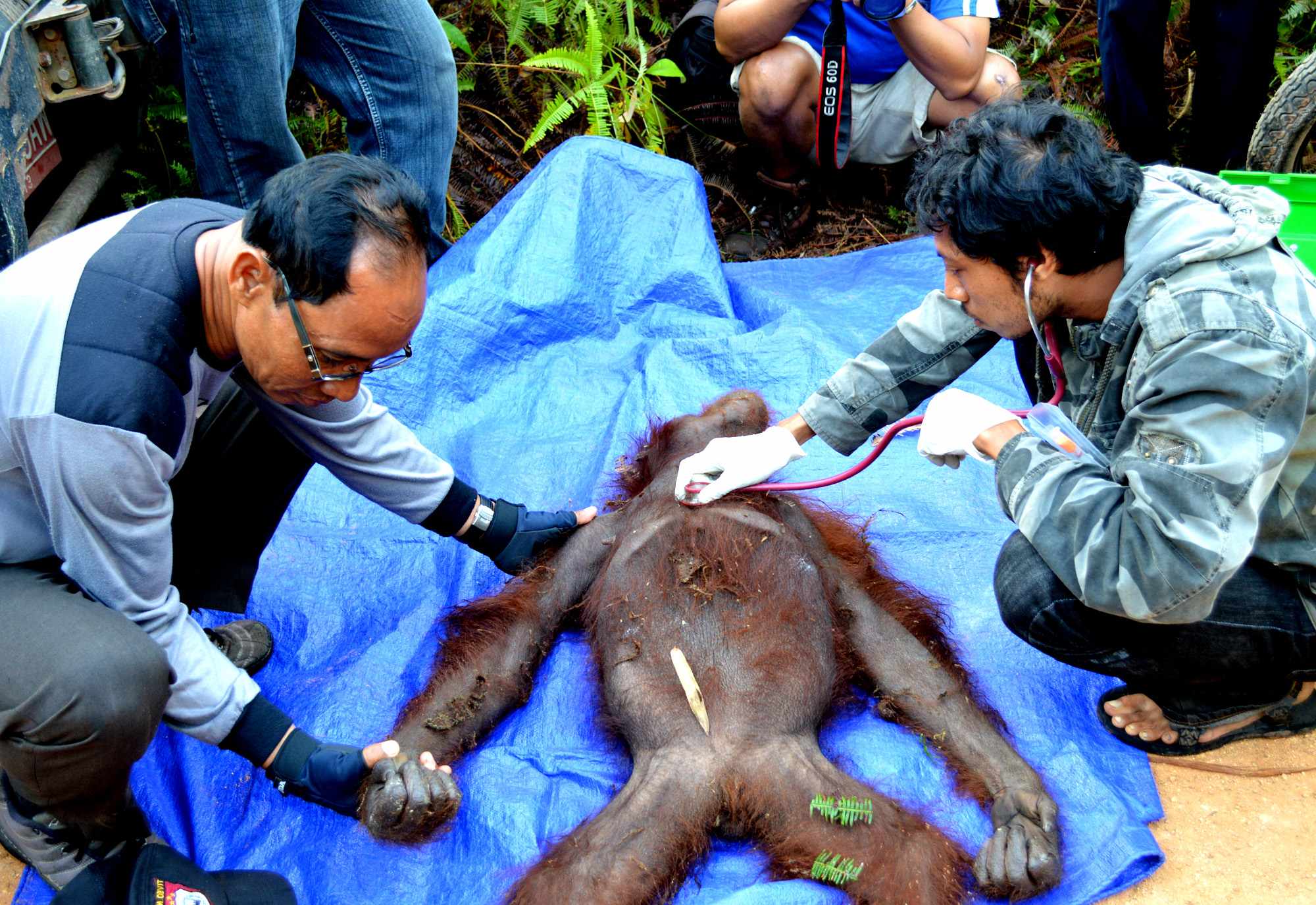
We finally transported her to Pangkalan Bun where she will be released in the Lamandau River Wildlife Reserve.
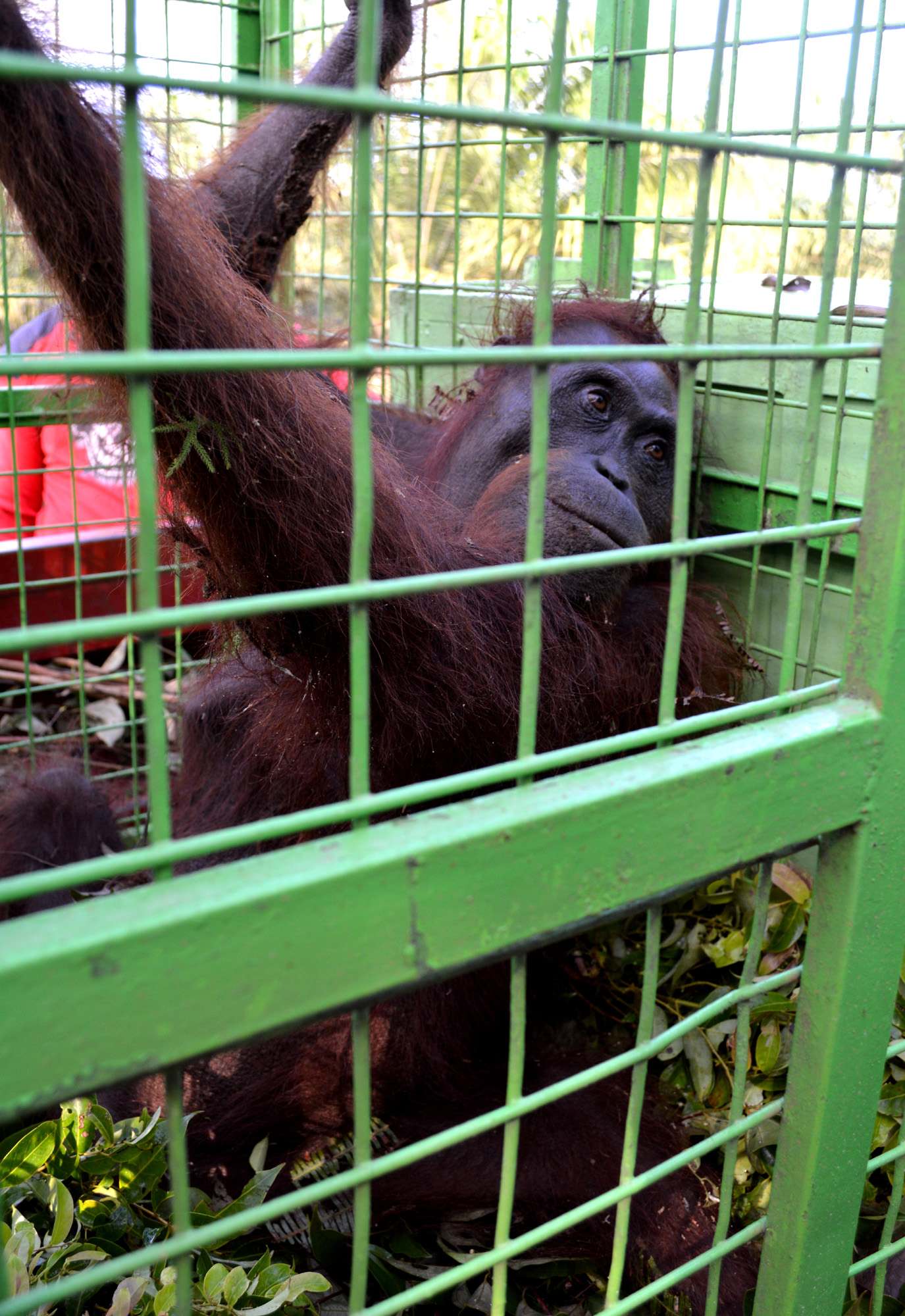
I thankyou for all support to this rescue, Orangutan Foundation team, BKSDA SKW II Kalteng and also PT GAP for all facilitations and support.
Dr Wawan - Orangutan Foundation Vet
 The Foundation is always asked 'How is the situation - facing the orangutans?'. We answer 'The Foundation is making progress', in one way by working closely with villagers and oil palm companies to mitigate human-wildlife conflict'. This strategy is working, as the Foundation is called upon to rescue stranded orangutans, rather than the individuals being harmed. Within one week in April, the Field staff were called upon to translocate four orangutans that had entered villager's farm land. One orangutan was found in a chicken farm and had eaten bananas and coconuts from the orchard on her way! These situations must be extremely frustrating for the farmers and yet rather than injure the marauding orangutan, the local people now know that there is an alternative, and that is to call upon the Rescue Team (OF and BKSDA).
The Foundation is always asked 'How is the situation - facing the orangutans?'. We answer 'The Foundation is making progress', in one way by working closely with villagers and oil palm companies to mitigate human-wildlife conflict'. This strategy is working, as the Foundation is called upon to rescue stranded orangutans, rather than the individuals being harmed. Within one week in April, the Field staff were called upon to translocate four orangutans that had entered villager's farm land. One orangutan was found in a chicken farm and had eaten bananas and coconuts from the orchard on her way! These situations must be extremely frustrating for the farmers and yet rather than injure the marauding orangutan, the local people now know that there is an alternative, and that is to call upon the Rescue Team (OF and BKSDA).